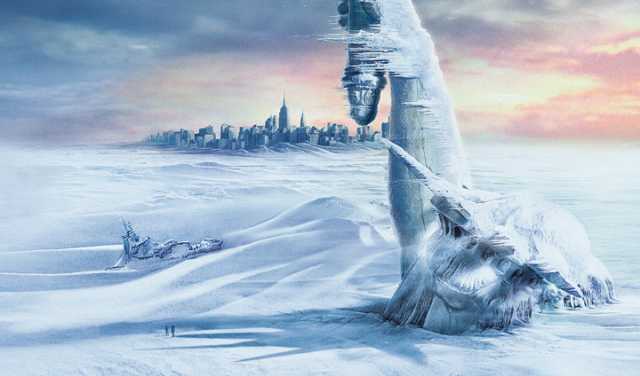| Online: | |
| Visits: | |
| Stories: |

| Story Views | |
| Now: | |
| Last Hour: | |
| Last 24 Hours: | |
| Total: | |
Earth Is Facing The Prospect Of A ‘Mini Ice Age’ This Century (Video)

Our planet is just 15 years from a new ‘mini ice age’ that could cause extremely cold winters characterized by the freezing of normally ice-free rivers as well as by year-round snow fields in areas that have never witnessed such climate conditions before, a group of astrophysicists claim.
The scientists could draw such a conclusion based on a new model of the sun’s activity that reportedly enables the researchers to make “extremely accurate predictions” of changes in solar activity.
Although, the fact that the sun’s activity varies within a 10-12 year long cycles was first discovered almost two centuries ago, in 1843, all the previously existing explanatory models failed to fully explain the fluctuations with each cycle as well as between the cycles.
Until now, the astrophysicists thought that the variations of the solar activity depended on the dynamo caused by convecting fluid deep inside the sun.
The latest study conducted by a research team from Northumbria University, Newcastle upon Tyne, UK, and led by Professor Valentina Zharkova demonstrated that the variations in the Sun’s activity are caused by two dynamo processes – one deep in the convection zone of the sun and one near its surface.
The research team analyzed three solar activity cycles that cover the period from 1976 to 2008 studying magnetic field activity of the sun during this time by using a technique called principal component analysis of the magnetic field observations from the Wilcox Solar Observatory in California.
The scientists discovered magnetic waves in two different layers of the Solar interior that“fluctuate between the northern and southern hemispheres of the Sun.”
“We found magnetic wave components appearing in pairs, originating in two different layers in the Sun’s interior. They both have a frequency of approximately 11 years, although this frequency is slightly different, and they are offset in time,”said Professor Zharkova.
Later, they also compared their findings concerning the intensity of the Sun’s activity with each year’s data on the average number of sunspots – a strong indicator of solar activity.
As a result, the team managed to create a very accurate model of predicting the solar activity fluctuations.
“Combining both waves together and comparing to real data for the current solar cycle, we found that our predictions showed an accuracy of 97 percent,” said Zharkova.
The study findings were presented at the National Astronomy Meeting in Llandudno on July 9 and published in the Royal Astronomical Society papers.
The model demonstrates that solar activity will fall by 60 percent by 2030 as the magnetic waves inside the Sun will become increasingly more desynchronized during the next two cycles, especially during cycle 26, which covers the decade between 2030 and 2040.
“In cycle 26, the two waves exactly mirror each other – peaking at the same time but in opposite hemispheres of the Sun. Their interaction will be disruptive, or they will nearly cancel each other,” Professor Zharkova said.
“Effectively, when the waves are approximately in phase, they can show strong interaction, or resonance, and we have strong solar activity. When they are out of phase, we have solar minimums. When there is full phase separation, we have the conditions last seen during the Maunder minimum, 370 years ago,” she added.
The Maunder minimum is a name of a period between 1645 and 1715 characterized by prolonged low solar activity as well as by extremely cold winters in Europe and North America as it also correlates with a climatic period between 1550 and 1850 called the ‘Little Ice Age.’
Ice Ages start and end so suddenly, ”it’s like a button was pressed,” say scientists
‘Forget global warming, prepare for Ice Age’
( via rt.com )
Check out more contributions by Jeffery Pritchett ranging from UFO to Bigfoot to Paranormal to Prophecy





“Our planet is just 15 years from a new ‘mini ice age’ that could cause extremely cold winters characterized by the freezing of normally ice-free rivers as well as by year-round snow fields in areas that have never witnessed such climate conditions before, a group of astrophysicists claim.”
Area’s that were affected during the last mini ice age, will be affected again in more or less the same way, it’s very unlikely to affect areas “that have never witnessed such climate conditions before”.
If you live north or south of temperate zones, you’ll freeze to death if you are not prepared. The year 1816 was immortalised as ’1800 and froze to death’. My advice is; learn by their mistake, prepare for it in advance, and if you don’t have the means to prepare, move to where living without provision is less of a problem, eg Mexico.